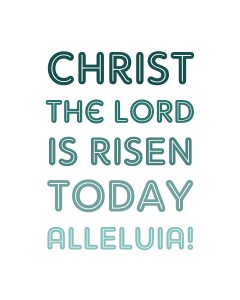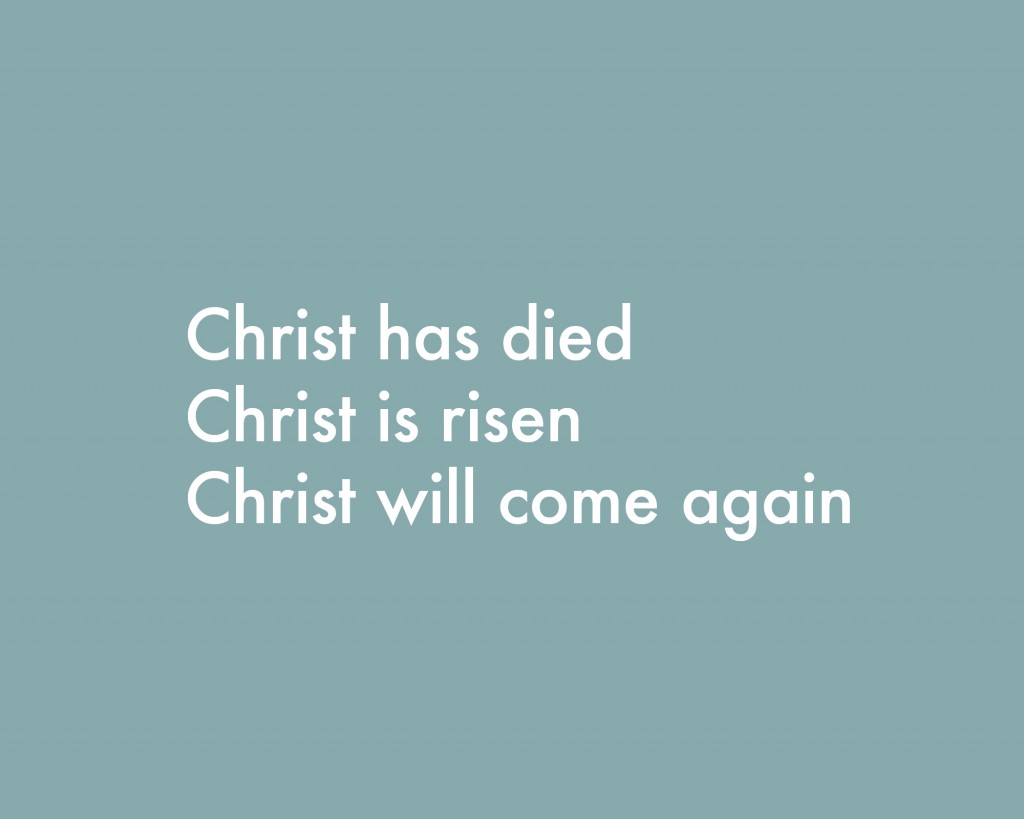A continuing series on celebrating the church year.
In Holy Week we have a unique entry point into the story of Jesus’ death and resurrection, and good church services have made memorable impressions on me over the years. Certainly utilize whatever your congregation is doing and ask friends how their church is celebrating as well.
Here are a few Good Friday printables I made you may want to decorate with. If you click on them you should be able to save and print them in high resolution.


Holy Week begins with Palm Sunday. Your church service may incorporate all of these elements but if it doesn’t, you can observe by reading the account (from Matthew 21 or Mark 11), singing an appropriate hymn such as “All Glory Laud and Honor” and waving palm branches (call around to florist wholesalers if you need to find them.) Save your palm branches for making crosses sometime during Holy Week.
The lectionary is always appropriate, and Gospel of Mark would make a good family devotion for Holy Week, reading 2 or 3 chapters a day. Also, the Lenten Lights devotional can be used for Holy Week, but you need to start the Saturday before Palm Sunday for it to line up. Families with young children might use resurrection eggs (google, there are some variations) for a nightly devotion, opening 1 or 2 each day and reading / discussing the appropriate scripture.
More protestant churches are offering stations of the cross or labyrinth prayer during Holy Week. You can also use the world-wide labyrinth locator to find one yourself. If you have school aged children, this might provide a good opportunity for quiet contemplation and prayer as you prepare for Good Friday.
Holy Week increases in intensity on Maundy Thursday. If you don’t have the opportunity to attend a service that night, you can read the story together from Luke 21:1-13, John 13:1-20, John 13:31-35 and Luke 22:14-62. You can enter the story by breaking up your reading by participating in some of the events such as washing each others feet, sharing bread and wine and going out into the darkness. Some families also use this night to have a Passover celebration. I’ve found that my Good Friday seems much more “real” after following Jesus through Maundy Thursday.
Crucifixion is not an easy topic to talk to children about, but without the cross, we don’t have the hope of Easter. Reading the Jesus Storybook Bible account would be a great start with a younger child. As your children get older, you can sing hymns like “When I Survey the Wondrous Cross” and read the account from one of the gospels (Matthew 27, Mark 15, Luke 23, John 19) and talk about it. What was it like for Jesus? How do you think the disciples felt? How does it make you feel? It might also be helpful to cultivate an atmosphere of quiet and darkness (close the drapes and keep lighting low) for Good Friday and Holy Saturday.
You can make an Easter garden with moss and found objects as a beautiful centerpiece, complete with a tomb to find empty Easter morning. I like this one. If you start early enough, you can also grow one with grass seed, like this blogger did.
Traditionally, Hot Cross Buns are made and consumed on Good Friday. There are other bread traditions such as Kulich which is served in Russia as part of the Easter meal, it would be fun to ask your grandparents if there are any special things they grew up making together during Holy Week and incorporating it into your Easter as well.
In the midst of family obligations and bustling activity, punctuate your Easter with joy. Borrowing from the Easter Vigil service in the Anglican tradition (an awesome liturgy, but long and often very late…) you could give each member of your family a bell and the first one to wake up after sunrise (or whatever time you deem appropriate) can run from room to room ringing it and shouting “Christ is risen!” as everyone else gets up to join them. Read a resurrection Sunday account while you eat your chocolate (Matthew 28, Mark 16, Luke 24, John 20) and sing something triumphant and appropriate together (“This Joyful Eastertide,” “Christ the Lord is Risen Today.”) Since our church meets in the evening, our tradition is to share lunch with other friends who have out-of-town family, and the feasting and fellowship is a huge part of Easter for our family.
Easter is not a day, but a season of resurrection that lasts for forty days. Doing something as simple as a small dessert every night (dark chocolate squares, fruit, store-bought treats…) could help to remind children of the joy of salvation. A special “Easter only” weekly tradition particular to your family would also be fun.
Here are some free Easter printables as well.


Feel free to share your traditions for making Holy Week and Easter meaningful and memorable in your home, there’s obviously much more than I can possibly mention.








